STH historically has done deep dives into some of the more niche topics in the server, storage, and networking industries. Power is an important aspect of data center operations so we wanted to take a look at an interesting option we had recently for power in the data center. We tested two 800W HPE Flexible Slot power supplies (PSUs) back-to-back in the same servers. We recently added a stack of HPE ProLiant DL325 Gen10 servers and tested both 80Plus Platinum and 80Plus Titanium options to see if the Titanium rating actually yields power savings.
Testing Two HPE ProLiant 800W PSUs Head-to-Head
Our HPE ProLiant DL325 Gen10 servers came with single 80Plus Platinum 94% efficiency power supplies. We needed to add second PSUs which gave us the idea to test the Titanium version of the units. Just as a quick aside here, even nearly fully loaded we have seen power with these servers in a range that a 500W PSU option is sufficient. Both options are overkill from what we have seen in this generation, but we wanted to do some testing.
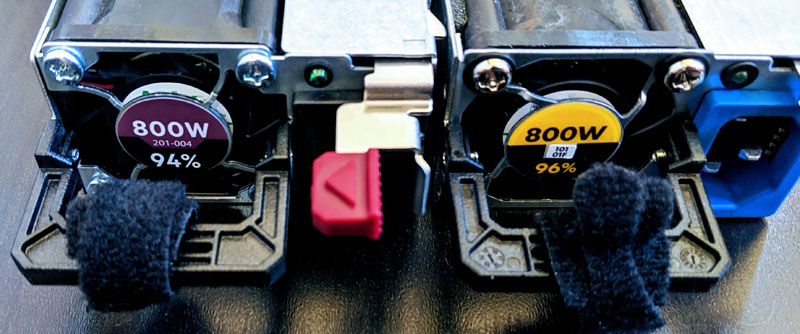
On the left side is the 800W 80Plus Titanium (94% efficiency) power supply we have been getting in our HPE ProLiant DL325 Gen10 servers. On the right is the 800W 80Plus Titanium (96% efficiency) PSU from our older generation of servers.
Test Setup
Here is our test configuration we are using:
- Server: HPE ProLiant DL325 Gen10
- CPU: AMD EPYC 7401P
- RAM: 256GB (8x 32GB) DDR4-2666 RDIMMs
- RAID Controller: HPE SmartArray P408i-a 12Gbps SAS3
- SSDs: 2x Toshiba 800GB PX02, 2x Micron 3.2GB S630DC, 2x Intel DC S3700 400GB
- NICs: HPE FlexLOM Mellanox ConnectX-3 Pro 40GbE
We then varied the power supplies and workloads to see what the different power consumption was with each workload. We were testing in our 208V racks which is important since the Platinum PSUs can operate from 100-240V while the Titanium PSUs were 200-240V only.
First, we had the standard HPE part number 720482-B21 (spare 754378-001) PSU. This is an 800W HPE ProLiant 80Plus Titanium part.
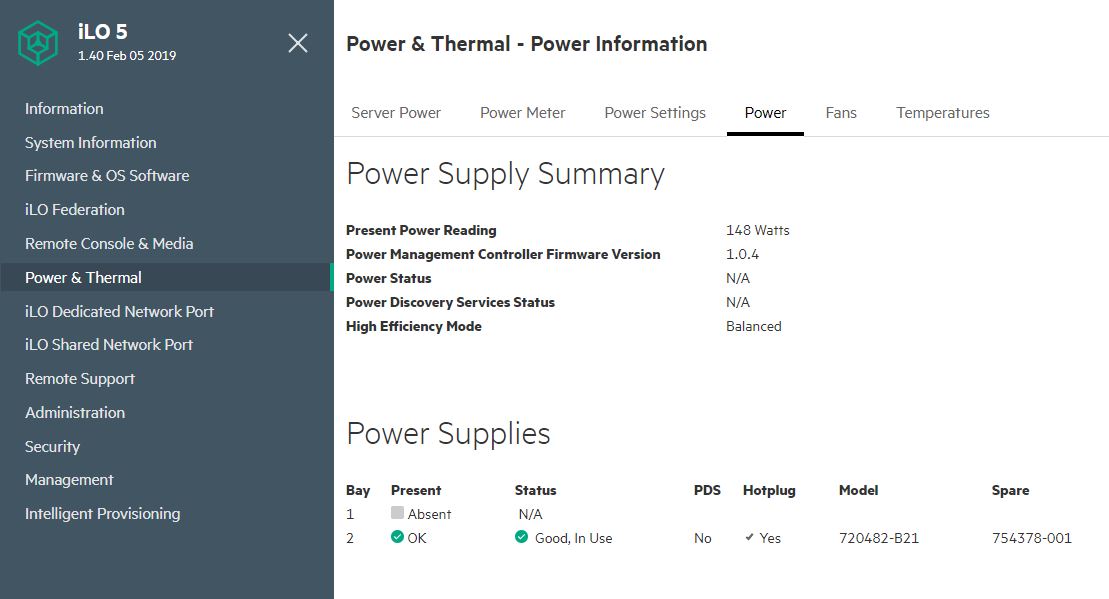
We also tried 865414-B21 (spare 866730-001) PSUs. These are 800W HPE ProLiant 80Plus Platinum parts.
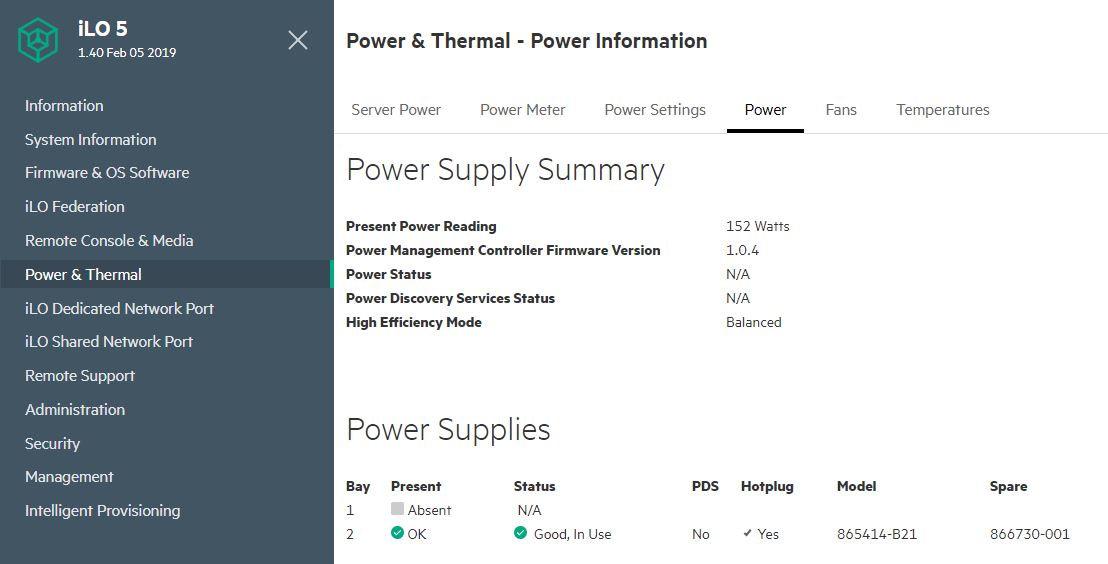
As a quick note here, you lose some efficiency with redundant power supplies so you can see we are running single PSU configurations. We tested this in our Single or Redundant PSUs Impact on Power Consumption piece several years ago.
We then tested the setups at several different utilization levels. Servers can have small variations in terms of total power consumption levels. We used a single server for our power consumption testing even though we have a number of these servers setup. We verified deltas on two other servers to validate our results.
We also used four of each PSUs to validate that we did not have a large variation due to a single PSU. During testing, we were surprised that our variance was +/-1W on all four of the PSUs of each.
Testing Two 800W HPE ProLiant Power Supplies
We had a fairly simple test methodology. We gradually increased VMs on the same test setup to scale memory and CPU utilization allowing each to stabilize for 15 minutes before adding another VM. Here is what we ended up with in terms of scaling on each 800W HPE PSU:
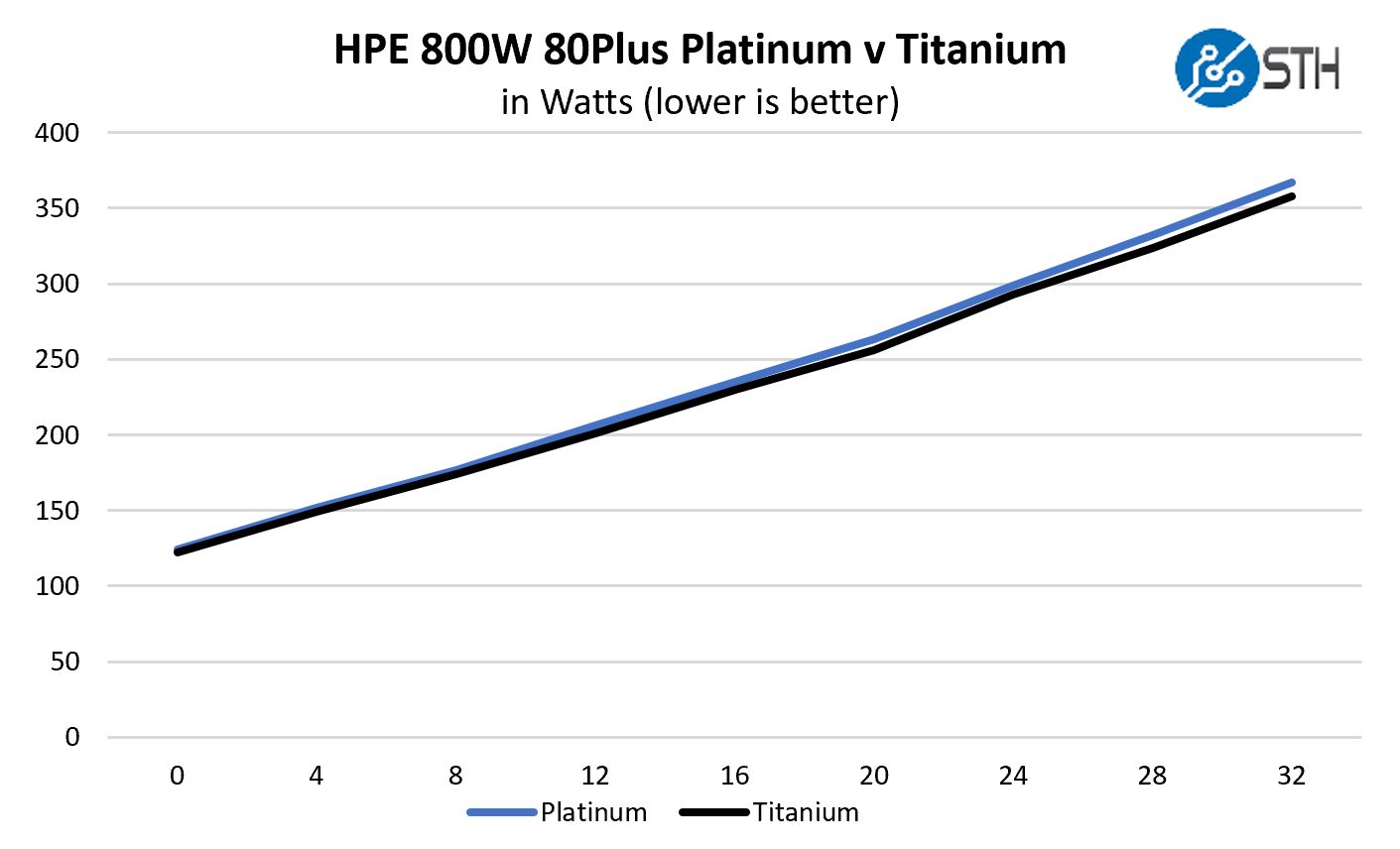
As one can see, Titanium matters, if only a bit. If a few watts does not matter to you due to having ample colocation power, then this does not matter. We know some hyperscale customers use $6/ Watt for TCO calculations. There, even at lower levels, the Titanium PSUs can be worth $24-$64. That is a big deal, but also one that has a finite premium ascribed to it.
Final Words
This was a simple test. As one can see, removing support for 100-120V circuits and increasing efficiency yielded better efficiency. There are a few points that are a bit more nuanced here. First, 800W is way too much for this system. It would be foolish to spec a rack expecting a HPE ProLiant DL325 Gen10 expecting to use one or both 800W PSUs to be fully loaded.
Some HPE customers do not like configuring servers with PSUs that exclude 110/120V support since that limits some usage scenarios. Most data centers using 800W PSUs will be running 208V or higher, but it is a consideration. For your TCO calculations, several watts can be shaved using higher efficiency power supplies. This makes perfect sense, but we wanted to put that 2% rating figure into the context of a server you can buy.

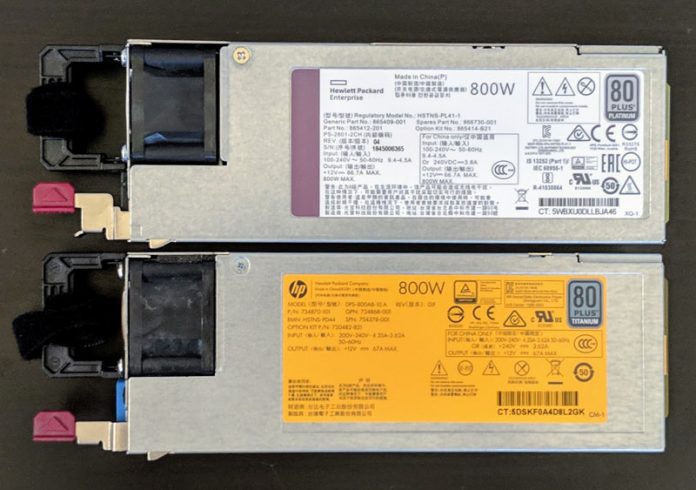



It’s worth thinking of that these PSUs are purposefully oversized in order to obtain their rating. Typically PSUs are most efficient around 50% of their rated capacity in this case around 400W.
Unfortunately this comes with the tradeoff that at lower consumption the PSUs are likely slightly less efficient. For typical data center usage where loads are generally between 20 and 30% (cpu/RAM) 500W PSUs are on average probably more efficient. For hyperscalers where the average load is typically higher these PSUs may make a lot of sense.
Ps. It will be difficult to find a 110V platinum PSU as the higher current automatically means a lower efficiency due to higher losses. There’s a very good reason most of the world uses 230 or 240V
I appreciate the testing through the range. You’re only doing a single PSU and many run redundant so load is half
What do the axes represent in the graph?
Martin Hansen: I think X is “number of running VMs” and Y is Watts. Always label your axis!